Volleyball rules ,skills and information
Volleyball information,Skills and Rules.....
Volleyball is a game which is spread all over the world and it is a versatile game ,a also it is famous all over the world. Youngsters passionate to play this game .
Some more about this game.....
Information:-
A Volleyball team contains 6 players in one team and also has 3 players as substitution.A player who stands very close to volleyball net is generally called as "Netman" or " Lifter"or middle blocker . There are two players called as "Smasher"are also called asright and left hitter are back of the netman. The third man is too important who is called as Center or a Passer or libero who gives pass of ball to lifter and then lifter tosses the ball and smasher hits it. The 2 player who are at end line of the court are called as scopers one of them is outside hitter and other is setter .The dimension of volleyball court and the players are shown in fooling digram.

Dimentions


Volleyball Strategies for Utilizing Explosive Energy
Often when coaches teach players to hit all they worry about is the order of steps and moving fast. This may be ok if you are a beginner, but if you want to get up high off the ground you need a more explosive approach and jump.
There’s more to learning about an approach than just the order of steps.
The steps in the approach have different characteristics. Some steps are shorter than others and some are quicker and more explosive.
Coaches may feel the hitter is in a better rhythm when approaching at a constant speed and that it’s easier time the hit this way.
There are many volleyball strategies for hitting. Probably the hardest skill in volleyball to change is the approach. If what you are currently doing is working, it may be best not to change.
For an explosive approach... The steps before the last 2 can be fairly relaxed and short. The main thing is you don’t use a lot of leg strength on these steps.
The last 2 steps are explosive.
The 4 step approach is basically like this…
- A relaxed right and then left to adjust for timing
- BIG explosive right
- Followed by a quick left
- Quick explosive lift-off
It is good if the ground contact time of the left foot (before the last 2 steps) is minimal, but what’s important there is that you put a great amount of force into the ground for a big step.
A few advantages to explosive steps...
-
You have more time to adjust your steps
When you are attacking, where you jump off the ground from is very important. With a constant speed approach, it’s harder to make adjustments with your steps like you can with an explosive last couple steps. Since you are waiting longer before you start your approach, you have more time to get a good read on the set. The better read you get, the better choice you will make in where you take-off from. -
You will jump higher
By going easy first and then exploding off your left foot and taking a big right-left, you will help maximize your jump height. -
You will confuse your opponents blocking
The quicker you approach, the harder it will be for your opposition to block and dig you. -
You will always have the option to swing
By approaching with quick explosive steps, you will always have the option to swing hard. If you approach quickly everytime, your opponents will have a much harder time reading your swing or shot. -
You will use energy more efficiently
By taking quick explosive steps you will better utilized stored elastic energy. This essentially means that if you were to approach slowly, it would take more effort to jump to the same height and hit a volleyball as hard. So the key is don’t waste energy by approaching slow.
Volleyball Strategies for Attacking With Power
Develop a quick approachLeave late and approach fast. A lot of attackers get stuck approaching at a constant speed because they approach early anticipating a set.
A lot of times this can be solved by waiting, forcing yourself to react quickly as if you’re going to be late getting there to hit.
Approach at an angle facing cross-court
As a right-handed attacker hitting on the left side, it’s best to be facing the cross-court angle when jumping to hit a volleyball.
A good way to get in the habit of this is to start your approach outside the court. Good volleyball strategies for hitting involve approaching at an angle because you have a mechanical advantage by turning your hitting shoulder towards the opponent’s court when hitting.
Broad jump or jump more straight up?
It is usually best to broad jump when attacking far off the net. When jump serving or attacking beyond the 3 meter line, you want to approach so you jump up and forward carrying your momentum towards the net.
The extra momentum you have flying forward allows you to hit a volleyball with more power. On a tighter set, you may want to jump more straight up to avoid landing in the net.
Volleyball Strategies for Effective Hitting
Learn to see the courtKnow who the better defenders are. Look at the defensive players before you approach to hit. Keep them in your peripheral vision as you approach.
Learn to see the block
Develop vision for seeing blockers.
They then use this skill to hit a volleyball around or off of the blocker.
Better blockers get into position well and are more predictable. This makes developing vision even more important for successful attacks.
Develop many shots
By having a larger range of hits (hard swing, cut shot, short roll, open hand tip, etc.) you will make it more difficult for your opponents to play defense.
Also, your opponents blocking is more difficult because attacking with different shots at different speeds can mess up their timing.
Learn to Swing Hard
How fast you approach the ball and the speed of the arm swing determines how hard you can hit a volleyball.Every attacker needs to develop the ability to swing hard. If you can hit hard, defenders often get caught on their heels ready for you to pound the ball.
Being able to swing can open up other hitting options and catch your opponents off guard.
Hit a Volleyball with Power
Listen to Your Teammates Calls
Every team should develop volleyball strategies for making calls.Your teammates can look at the opponents court and call out where to hit the ball. Common court calls include “line”, “angle”, or “cross”. Teammates can also tell where to hit by looking at the blockers.
Common calls for hitting around a block include “hard angle”, “hard line”, or “nobody up”, or “hole”.
Always be Ready to Hit
It is easy to get in the habit of just standing and watching sometimes.As an attacker, it is really important to always be ready to take an approach and hit. It’s best to be ready and expecting to be set every time the setter sets the ball.
By expecting to be set, you will develop a consistent approach and swing every time you hit a volleyball.
Use full arm extension when contacting the ball
Many players' volleyball strategies for increasing their touch height involve conditioning to increase their vertical jump.Many players could increase their reach just by learning to fully extend their arm when they hit.
Becoming a successful attacker involves attacking skills in combination with effective volleyball strategies for hitting.
Hitting a Volleyball Related Pages
Learning to Spike Attacking TermsAttacking Drills
Volleyball › Volleyball Strategies › Hit a Volleyball
6 Basic Skills in Volleyball
The six basic volleyball skills are passing, setting, spiking, blocking, digging, and serving.
Passing is often thought of as the most important skill in volleyball. If you can't pass the serve, then you won't ever put your team in a position to score a point.
The importance of serving is often undervalued. Many coaches don't teach players to serve aggressive and use this opportunity to give the team an advantage for scoring points.
Blocking is perhaps the least taught skill in volleyball. Players can get away with poor blocking skills because not blocking isn't going to hurt the team as much as being poor at executing other skills in volleyball.
Digging is another skill that isn't focused on quite as much as most skills in volleyball.
The setter position is considered to be the most important position in volleyball. The setter basically runs the team offense.
How to Play Volleyball
The object of the game is to score 25 points first.
Points are scored by winning the rally. One way to win the rally is by spiking the ball to the floor of the opponents court.
There are many other ways to win the rally.
Here are a few...
- Hitting the ball off the opponent in way that ball isn't retrievable.
- The opponent not being able to return a spiked ball back across the net successfully.
- The opponent volleyball spiking the ball out of bounds.
- Serving the ball so tough it can't be returned.
Basic Strategy for Winning in Volleyball
The big picture END RESULT that we're after is to win the game. You win the game by scoring points.
Now think of each skill in volleyball as having an END RESULT that you're after.
Always be focusing on the END RESULT
When first learning to play volleyball, skills should be taught with the end result in mind.
For example, the end result of the serve is the opponent passes or doesn't pass the ball.
The end result of the volleyball pass is the passer passes the ball to the setter to set the ball.
The end result of a set is a spike by an attacker.
The end result of a block is deflecting the ball coming from the opponent.
UNDERSTAND THE END RESULT OF EACH SKILL
It's important to understand the end result that we're after.
For example, every single time a passer passes the ball, they should be aware of whether or not the ball was passed in such a way that made it easy for the setter to set it. The passer should be aware of this because this is their role on the team....passing the ball to the setter in way that makes the setter's job easier.
The better job a passer does passing, the easier it will be for the setter to set the ball to an attacker.
This is why developing basic volleyball skills is so important.
The main goal should always be on developing individual player skills
Jumping High to Spike
Developing Individual Playing Skills
Don't take the idea of developing basic volleyball skills for granted. The more developed a players individual skills, the more success your team will have.

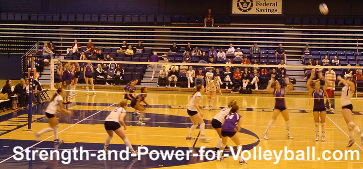

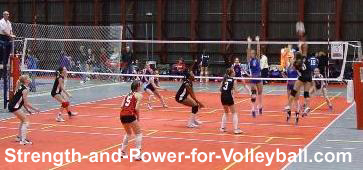
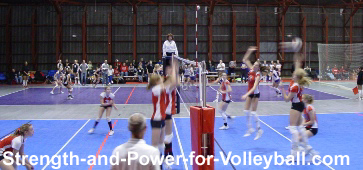
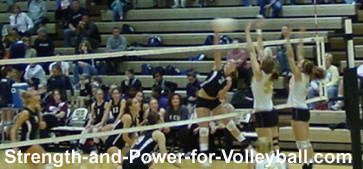
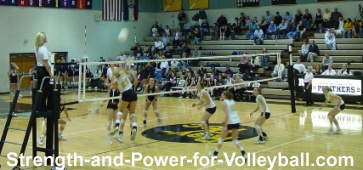
Comments
Post a Comment